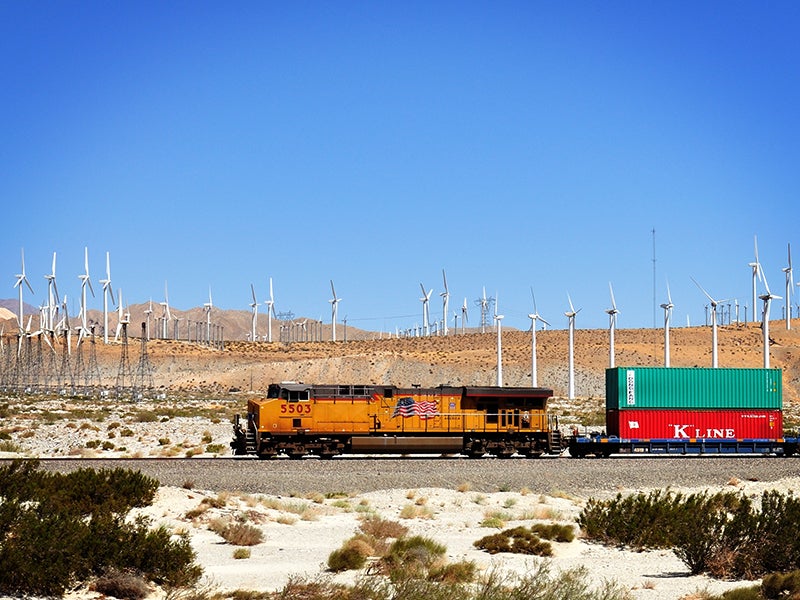Cleaning Up California’s Dirty Freight System
California asserts its commitment to a strong economy and a healthy environment in its new Sustainable Freight Action Plan, but the state can do even more to clean up the polluting freight system.

This page was published 9 years ago. Find the latest on Earthjustice’s work.
On July 29, California inched toward moving goods more sustainably and efficiently when it released the California Sustainable Freight Action Plan. Created by a number of state agencies following an executive order from Governor Jerry Brown, the development of the plan is a testament to California’s leadership in economic growth and environmental protection. The plan aims to make our state’s intricate system of ports, trucks, rail yards and trains work more efficiently while emitting less pollution. The plan falls short of the changes needed to fully achieve the state’s environmental goals, but it is a start down the path toward California’s zero-emission future.
California leads the country in making freight sustainable because the movement of goods shapes our state. California is a gateway for goods moving across the Pacific Ocean to homes in the United States. Together, the twin ports of Los Angeles and Long Beach are the 9th largest port in the world. And the environmental impacts of this busy system are astounding.
Communities closest to freight hubs suffer the consequences of California’s highly polluting freight system. The freight system emits roughly 50 percent of all the carcinogenic diesel particulate matter and 45 percent of all smog- and soot-forming nitrogen oxides in California. The 18 million people living in the Los Angeles region and the more than 4 million people living in the San Joaquin Valley breathe the worst air in the nation, due in no small part to the pollution emitted by freight.
Communities near rail yards and highways suffer disproportionately from respiratory problems, heart disease and even cancer. The impacts are not limited to Los Angeles and the San Joaquin Valley; they affect communities throughout the state. For example, one study found that the communities closest to the Port of Oakland experience a cancer risk of up to 1,200 in one million, far higher than can be considered safe. The health impacts of the status quo highlight the urgent need to move toward a zero-emission freight system.
What does a zero-emission system look like? It looks like container ships that plug into electricity at ports, so that families in nearby neighborhood don’t breathe their toxic diesel emissions. It’s a future in which cargo handling equipment and trucks run on electricity generated from renewable sources in California. And ultimately, it means cleaner air for the state—especially for the fenceline communities living alongside ports, highways and rail yards.
Protecting the health of fenceline communities demands a swift transition to zero-emission technologies wherever possible, which is why the details of California’s new freight plan are so disappointing. The plan establishes a target of 100,000 vehicles and pieces of equipment “capable of zero-emission operation” by 2030. It sounds like a big number, but we can do better. In fact, research shows that California has already exceeded the 100,000 vehicle target. Earthjustice and our partner organizations, working together as the California Cleaner Freight Coalition, advocated for a more visionary but still achievable target that would require 500,000 vehicles and pieces of equipment with zero-emission technology by 2030.
Despite the plan’s shortcomings, there are reasons for hope. Due to our advocacy, California agencies have committed to re-evaluating the zero-emission technology target in 2019. We will be there in three years to support a more ambitious target for zero-emission vehicles and equipment. California’s plan is an early entry in a growing national movement to clean up freight pollution. We will continue working with our partners and fighting for a more ambitious goal for California—one that will embolden other states to tackle freight pollution and put forward a new vision for their communities.
The California Regional Office fights for the rights of all to a healthy environment regardless of where in the state they live; we fight to protect the magnificent natural spaces and wildlife found in California; and we fight to transition California to a zero-emissions future where cars, trucks, buildings, and power plants run on clean energy, not fossil fuels.